You dont have to code (programming) to use reef-pi, but you'll need some familiarity with computer to install and configure it. You also need some diy skill (like soldering, dremel skills may be). Albeit all of it can be learned fairly easily and docs are available on all of this. The project combine all beginner friendly & educational components (Raspberry Pi, adafruit boards etc), but yes, there is learning involved if you have never worked with computer or simple electronics.Is this geared towards those who know how to code to their liking or will there be some easy GUI for non software folks?
Navigation
Install the app
How to install the app on iOS
Follow along with the video below to see how to install our site as a web app on your home screen.
Note: This feature may not be available in some browsers.
More options
You are using an out of date browser. It may not display this or other websites correctly.
You should upgrade or use an alternative browser.
You should upgrade or use an alternative browser.
Reef-Pi Controllers: New all-in-one with power bar, and the original Pico
- Thread starter theatrus
- Start date
- Tagged users None
As everyone already said, its still Reef-Pi under the hood, and some amount of wiring and software installation work will still be required to make this work. Its not truly plug and play, but you might be able to get away without any major soldering (maybe a few small wires).
Yeah, particularly if this board is available, most soldering and electronics work will be gone., its pretty much attach Raspbery Pi, mount it to housing install reef-pi and you are good to go.
How will one be able to get their hands on these boards?
I’m happy to accept beta requests once I have V2 ironed out. I’ll post more information here when I have it. I suspect a month turnaround will be expected to get all the ducks in a row.
I’m iterating through v2. A few highlights:
- I realized I can fit the Phoenix pluggable PTSM terminal blocks on the *bottom* of the board with a tiny clearance to the bottom of the case without having to use standoffs on the PCB. This gives a lot more room for I/O. Soldering to the bottom is a second operation but limited to a few headers shouldn’t be a major issue.
- Considering using a 4P4C cable (RJ11, phone cord) as a 12V and I2C breakout extender. I need to see how viable I2C is in this circumstance, or just switch to RS485/CAN using the Pi’s UART for reliability.
- Dropped the HDMI in favor of the DB9 12V relay control. The other I/Os can be exposed over the pluggable terminals with buffers.
I’ll share some updated schematics soon. I also got my CO2 laser back in working shape so I can do prototype cutouts on the plastic cases.
- I realized I can fit the Phoenix pluggable PTSM terminal blocks on the *bottom* of the board with a tiny clearance to the bottom of the case without having to use standoffs on the PCB. This gives a lot more room for I/O. Soldering to the bottom is a second operation but limited to a few headers shouldn’t be a major issue.
- Considering using a 4P4C cable (RJ11, phone cord) as a 12V and I2C breakout extender. I need to see how viable I2C is in this circumstance, or just switch to RS485/CAN using the Pi’s UART for reliability.
- Dropped the HDMI in favor of the DB9 12V relay control. The other I/Os can be exposed over the pluggable terminals with buffers.
I’ll share some updated schematics soon. I also got my CO2 laser back in working shape so I can do prototype cutouts on the plastic cases.
Some progress on the DB9 "Revision C" board:
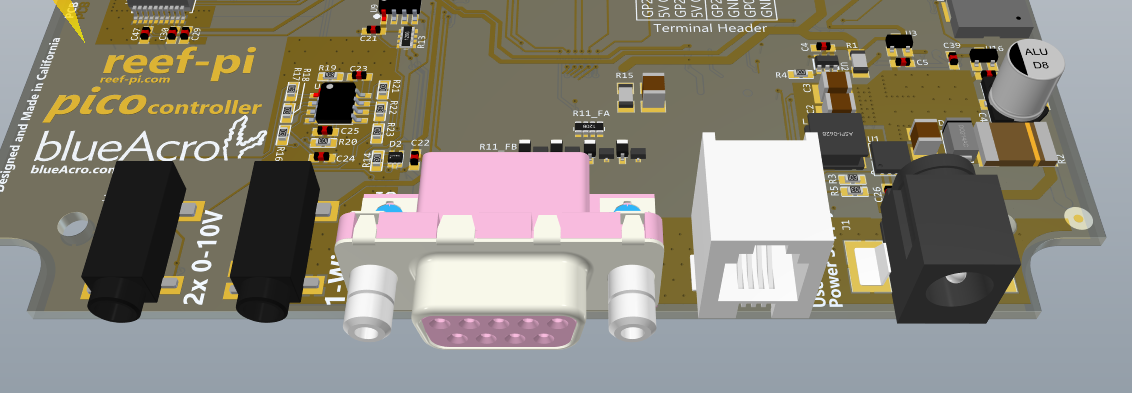
- DB9 connector in place of the HDMI connector. The Pluggable terminal block has moved off to the _other_ side of the board, and will host the future I2C breakout, in addition to the two inputs and two 5V outputs.
- RJ10/4P4C connector placed on board. Will route the Pi's miniUART through a CAN transceiver to this header, along with 12V. Phone cord cables are dirt cheap, small, and also easy to make so I'm pretty happy with this compromise on digital expansion.
@Ranjib : Can you confirm whether the American DJ power strip has any diodes across the relay coils or not? I added diode footprints on this board but not sure if this is really required.

- DB9 connector in place of the HDMI connector. The Pluggable terminal block has moved off to the _other_ side of the board, and will host the future I2C breakout, in addition to the two inputs and two 5V outputs.
- RJ10/4P4C connector placed on board. Will route the Pi's miniUART through a CAN transceiver to this header, along with 12V. Phone cord cables are dirt cheap, small, and also easy to make so I'm pretty happy with this compromise on digital expansion.
@Ranjib : Can you confirm whether the American DJ power strip has any diodes across the relay coils or not? I added diode footprints on this board but not sure if this is really required.
ADJ powerstrips are fairly barebone, each of those DB9 pins are pretty much directly connected to a 12V relay, this is the image from @Michael Lane's threadSome progress on the DB9 "Revision C" board:

- DB9 connector in place of the HDMI connector. The Pluggable terminal block has moved off to the _other_ side of the board, and will host the future I2C breakout, in addition to the two inputs and two 5V outputs.
- RJ10/4P4C connector placed on board. Will route the Pi's miniUART through a CAN transceiver to this header, along with 12V. Phone cord cables are dirt cheap, small, and also easy to make so I'm pretty happy with this compromise on digital expansion.
@Ranjib : Can you confirm whether the American DJ power strip has any diodes across the relay coils or not? I added diode footprints on this board but not sure if this is really required.
https://www.reef2reef.com/threads/diy-reef-pi-build-log.458088/#post-5156444
@theatrus I'll happily jump on the beta team for this board if you're looking for more testers. I have my reef-pi up and running on a Pi 3 without any hardware currently, but I also have a Pi0 w (cuz why not?!?) so I could test with that as well.
Great build btw, love to see all the work going into this project!
Great build btw, love to see all the work going into this project!
ADJ powerstrips are fairly barebone, each of those DB9 pins are pretty much directly connected to a 12V relay, this is the image from @Michael Lane's thread
https://www.reef2reef.com/threads/diy-reef-pi-build-log.458088/#post-5156444
Perfect, thanks! My set of strips is still lost somewhere in a shipping black hole. I’ll retain the diodes.
Some background on the fly back diodes:
https://en.m.wikipedia.org/wiki/Flyback_diode
Iteration continues, and I've reached some design points which I think are interesting.
In the reef-pi megathread I called out the idea of using an expansion system based on the commonly available microcontroller platform in addition to the MCP23017 I2C I/O expanders for more GPIO, as it would also gain analog and PWM capabilities in one shot. Specifically, we were looking at the Arduino Zero (ATSAMD21G) derived controllers.
As I'm looking at what I/O I'm exposing, and based on testing, I2C over longer lengths starts to become more problematic (and random flakiness can be pretty frustrating), especially when I2C is routed near higher power wires around LED lighting and pump controllers. It works in HDMI cables as they're shielded, but not everyone is going to have shielded cables (would have to use ... USB cables, or HDMI, but they're thick and somewhat frustrating).
I wanted to originally expose this using a CAN bus UART interface, stealing some ideas from the APEX line. CAN is pretty robust over quite a distance, and has a much higher tolerance to electrical issues as its a differential bus. The problem is of course, the hardware here would be entirely custom.
Then, looking at the Pi hardware, it somewhat hit me: USB. We've been entirely ignoring USB. Pretty much any modern cheap microcontroller has USB capability, its plug and play, it provides auto-detection of new hardware, and we can make it use easy USB device classes like the USB CDC (Serial Port) to make it look like other hardware. USB also means we can actually use the I/O modules on hardware beyond the Pi (not that someone would want to do that, I mean it is called Reef-Pi after all ).
).
The biggest hurdles:
- USB does require hubs if you want more than one device.
- USB is 5V only and the Pi can't supply a lot of power on the USB downstream ports
We can avoid making a wiring mess with hubs by actually baking an optional 2-3 port USB hub into each product. The cost for a standard USB 2 hub parts is surprisingly... low.
The current limit means we do need to bring in extra power for things like extra relay control, but 0-10V analog products can be easily run off a small boost converter as they're very low power.
I'm still going to break out I2C on a header, but looking at turning any functional extension devices into USB devices instead.
In the reef-pi megathread I called out the idea of using an expansion system based on the commonly available microcontroller platform in addition to the MCP23017 I2C I/O expanders for more GPIO, as it would also gain analog and PWM capabilities in one shot. Specifically, we were looking at the Arduino Zero (ATSAMD21G) derived controllers.
As I'm looking at what I/O I'm exposing, and based on testing, I2C over longer lengths starts to become more problematic (and random flakiness can be pretty frustrating), especially when I2C is routed near higher power wires around LED lighting and pump controllers. It works in HDMI cables as they're shielded, but not everyone is going to have shielded cables (would have to use ... USB cables, or HDMI, but they're thick and somewhat frustrating).
I wanted to originally expose this using a CAN bus UART interface, stealing some ideas from the APEX line. CAN is pretty robust over quite a distance, and has a much higher tolerance to electrical issues as its a differential bus. The problem is of course, the hardware here would be entirely custom.
Then, looking at the Pi hardware, it somewhat hit me: USB. We've been entirely ignoring USB. Pretty much any modern cheap microcontroller has USB capability, its plug and play, it provides auto-detection of new hardware, and we can make it use easy USB device classes like the USB CDC (Serial Port) to make it look like other hardware. USB also means we can actually use the I/O modules on hardware beyond the Pi (not that someone would want to do that, I mean it is called Reef-Pi after all
The biggest hurdles:
- USB does require hubs if you want more than one device.
- USB is 5V only and the Pi can't supply a lot of power on the USB downstream ports
We can avoid making a wiring mess with hubs by actually baking an optional 2-3 port USB hub into each product. The cost for a standard USB 2 hub parts is surprisingly... low.
The current limit means we do need to bring in extra power for things like extra relay control, but 0-10V analog products can be easily run off a small boost converter as they're very low power.
I'm still going to break out I2C on a header, but looking at turning any functional extension devices into USB devices instead.
USB is indeed a great choice. Better alternative to canbus or i2c. But usb is also fragmented (b, c etc).
I think the expansions are scope creep for pico board, they will increase the cost and can derails your plan to get anything done in a fixed time , just because they are very open ended right now.
I think the expansions are scope creep for pico board, they will increase the cost and can derails your plan to get anything done in a fixed time , just because they are very open ended right now.
USB is indeed a great choice. Better alternative to canbus or i2c. But usb is also fragmented (b, c etc).
I think the expansions are scope creep for pico board, they will increase the cost and can derails your plan to get anything done in a fixed time , just because they are very open ended right now.
C is a superset of B if you’re on USB 2.0 and nothing here needs the speed (plus the RPi SoC can only handle USB 2 anyway). I’m not going to get started on the disaster that is USB PD.
The upside here is I can now jettison an entire subsystem (UART CAN), so I’ve removed scope creep. Layout is done on the DB9 block, as well as the moved expander and I2C blocks.
NiceC is a superset of B if you’re on USB 2.0 and nothing here needs the speed (plus the RPi SoC can only handle USB 2 anyway). I’m not going to get started on the disaster that is USB PD.
The upside here is I can now jettison an entire subsystem (UART CAN), so I’ve removed scope creep. Layout is done on the DB9 block, as well as the moved expander and I2C blocks.
Current board status in images below.
I've also updated the full schematic sheets and design files to GitHub
https://github.com/blueacro/reefpi-pico
See the PDF for full information.
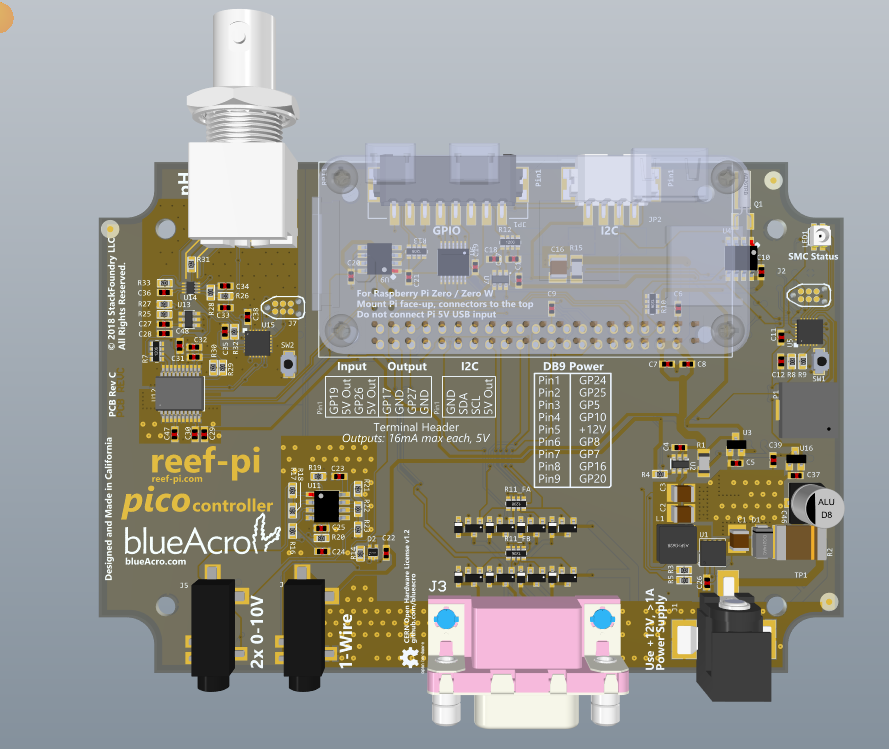
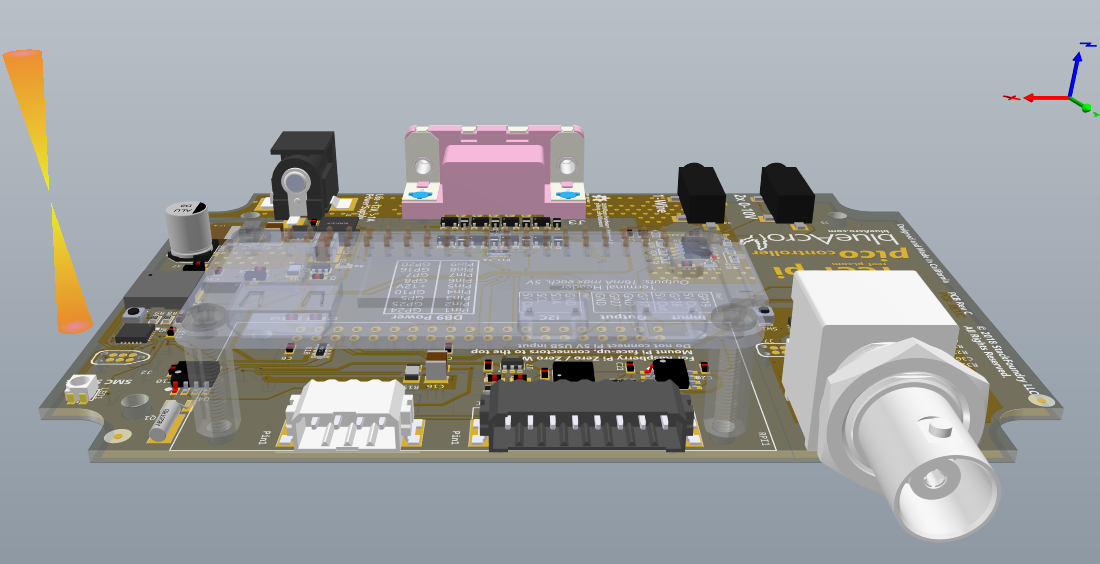
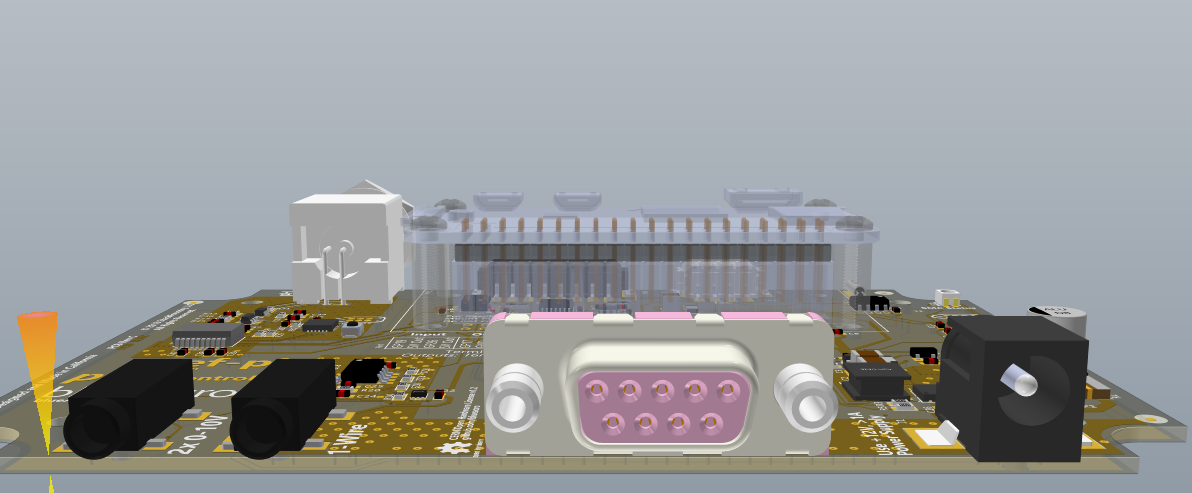
I've also updated the full schematic sheets and design files to GitHub
https://github.com/blueacro/reefpi-pico
See the PDF for full information.



- Joined
- Mar 8, 2014
- Messages
- 915
- Reaction score
- 735
Hi guys. I have been shopping on eBay and Amazon trying to get everything together. I’ve noticed that some have different materials. I’m looking for a good enclosure that looks nice, waterproof and easily accessible. As far as the powerstrip, I’ve also seen different ones as well. Not that the one you’ve chosen for the list isn’t adequate, I just want to see what my choices are. Can you guys post me some links for your off list purchases. I’m determined to place my order today so that I can make more progress.
Thanks
Paul
Thanks
Paul
Tweaked the DB9 connector to allow it to fit into the case:
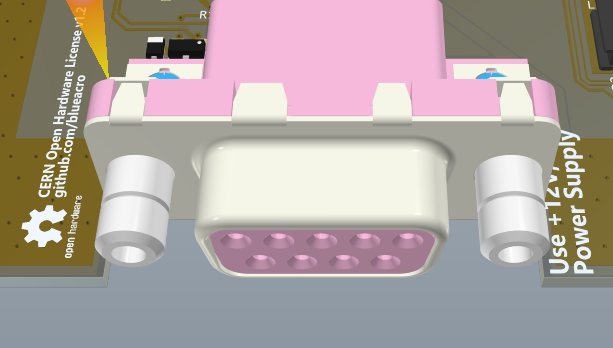
Also updated the panel drawing, and sent this design revision out to manufacturing!
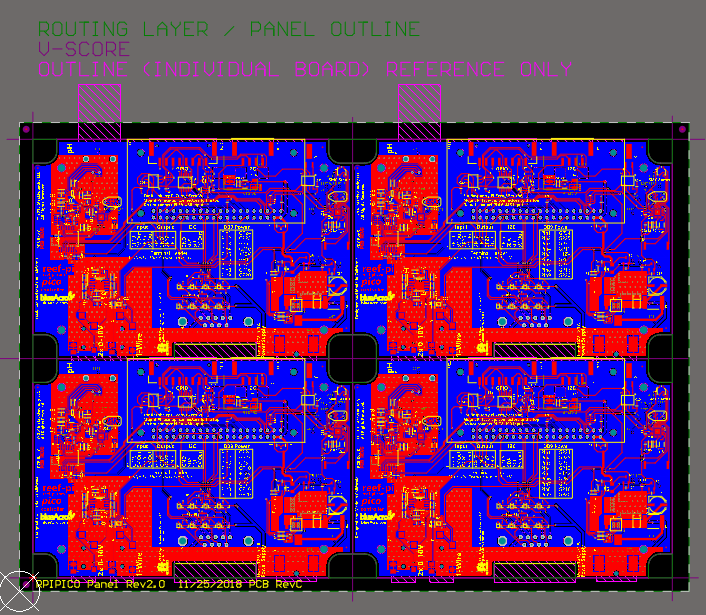

Also updated the panel drawing, and sent this design revision out to manufacturing!

Hi guys. I have been shopping on eBay and Amazon trying to get everything together. I’ve noticed that some have different materials. I’m looking for a good enclosure that looks nice, waterproof and easily accessible. As far as the powerstrip, I’ve also seen different ones as well. Not that the one you’ve chosen for the list isn’t adequate, I just want to see what my choices are. Can you guys post me some links for your off list purchases. I’m determined to place my order today so that I can make more progress.
Thanks
Paul
Ranjib recommends a suite of stuff here: https://learn.adafruit.com/reef-pi-power-controller/parts
Similar threads
- Replies
- 10
- Views
- 293
- Replies
- 57
- Views
- 2,479
- Replies
- 82
- Views
- 4,813

















